Martin Roy Hill's Blog, page 9
February 6, 2014
Forget the Movie, Morrell's "First Blood" Is a Classic
 David Morrell's action thriller, First Blood, is considered the grand daddy of the modern action thriller. Better known as the first Rambo story, First Blood is the story of a homeless Vietnam vet who, pushed to the brink by harassment from southern small town cops, erupts into a murderous rampage.
David Morrell's action thriller, First Blood, is considered the grand daddy of the modern action thriller. Better known as the first Rambo story, First Blood is the story of a homeless Vietnam vet who, pushed to the brink by harassment from southern small town cops, erupts into a murderous rampage.I never cared much for the Rambo movie starring Sylvester Stallone. But having served in the American south at the end of the Vietnam War, I was well acquainted with the harassment service members endured at the hands of southern cops and other rednecks (I remember signs warning: "Sailors and dogs, keep off the grass"), and since I am a great fan of Morrell's writing, I decided to try the book.
Though based on Morrell's novel, Stallone's movie is in no way the same story. Where the movie is a typical shoot-'em-up action flick, Morrell's creation is a complex character study of two war heroes – Rambo of Vietnam and Sheriff Teasle of Korea – and the strength and flaws that drive each of them. Where the movie is a MacDonald's burger and fries, the book a five course feast.
Morrell has written that his writing is greatly influenced by the fact he lost his father in WWII and that his step-father was abusive. You clearly see that influence in First Blood. Teasle lost his father at an early age, and Rambo's father was abusive. Teasle's marriage is breaking up over his desire to have children, particularly a boy. The imagery circulates through the book until, in the end, Teasle and Rambo are more estranged father and son then cop and fugitive.
This is a worthy book well deserving of its place in literature. But one warning: Do not read the author's introduction explaining the history of the book until after you've read the book. The intro contains spoilers.
flag
January 27, 2014
A Wonderfully Witty Literary Thriller
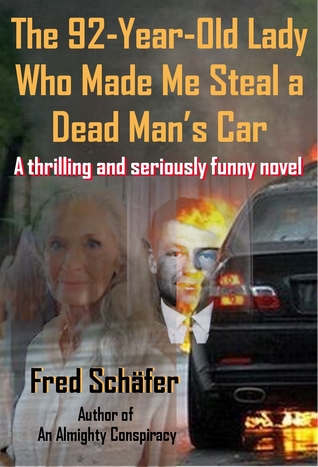 Take an elderly woman, add a young writer who also happens to be serial killer, mix in a couple dozen imaginary characters who may not be all that imaginary, and finish up with a big dollop of literary humor and what do you get? You get Fred Schäfer’s delightful The 92-Year-Old Lady Who Made Me Steal a Dead Man's Car.
Take an elderly woman, add a young writer who also happens to be serial killer, mix in a couple dozen imaginary characters who may not be all that imaginary, and finish up with a big dollop of literary humor and what do you get? You get Fred Schäfer’s delightful The 92-Year-Old Lady Who Made Me Steal a Dead Man's Car.Eberhardt Walker is a 34-year-old writer whose biggest concern in life is the fact that he secretly murders rapists as a hobby. But when Eberhardt meets 92-year-old Irene Sonntag in the middle of a busy intersection, and she convinces him to steal the car of another man who has just been run over in that intersection, his life really becomes unreal.
It seems Irene owns a rather large private library in which literary characters come to life, and many of them are not happy with the way they are portrayed in their books. Jay Gatsby, for instance, doesn't like the way F. Scott Fitzgerald left him floating in the pool at the end of The Great Gatsby. Jesus wants more humor in the Bible. Henry Miller's wife, June, wants more credit for being the role model for the character Mona in Sexus.
Eberhardt and Irene, along with their cadre of characters, embark on a criminal enterprise designed to secretly rewrite sections of some of the world's greatest literature that takes them from New York to Europe and back again.
Aptly subtitled A Thrilling and Seriously Funny Novel, 92-Year-Old Lady is a wonderfully witty rump through literature, philosophy, and criminality. If you're looking for a wickedly funny read, this is it.
January 14, 2014
After More than 100 years, Quatermain Is Still a Legendary Hero
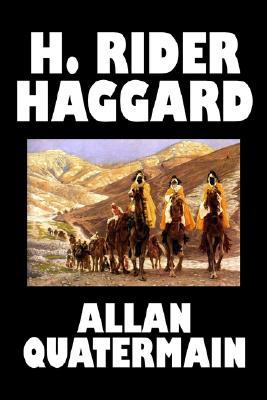 With publication of his first book, King Solomon’s Mines, in 1885, H. Rider Haggard became known as the father of the Lost World literary genre. Its best known cinematic offspring was the Indiana Jones series of movies.
With publication of his first book, King Solomon’s Mines, in 1885, H. Rider Haggard became known as the father of the Lost World literary genre. Its best known cinematic offspring was the Indiana Jones series of movies.
Allan Quatermain is Haggard’s sequel to King Solomon’s Mines, and brings back big game hunter Quatermain and his associates, Sir Henry Curtis and Captain John Good, RN. Bored by Victorian English life and the wealth they accumulated by finding Solomon's mines, the three shuck it all and return to southern Africa to seek a legendary tribe of white Africans said to be living the unexplored heart of the Dark Continent. The trio is joined on their trek by a cowardly French chef and a brave Zulu chief. Together they battle their way through jungles, a hellish underground river, and an assault by warlike Maasai tribesmen.
But they do find the legendary tribe of white Africans and their country of Zu-Vendi. There Sir Curtis falls in love with one of two queen sisters. Jealousy between the siblings ruptures into civil war and the three Englishmen must chose sides.
Having lived in southern Africa for a number of years, Haggard writes with great respect for the Africa natives – an unusual trait for a Victorian English writer. His Zulu characters are wise and courageous, and often are the true heroes of the stories. Sarcastic remarks about English society made by Quatermain, the narrator, give evidence of Haggard's own thoughts about Victorian England.
Though this was the second of nearly 20 books and short stories, it is actually Quatermain's last great adventure. The rest of the Quatermain stories take place before the King Solomon's Mines adventure. If you enjoy action adventure stories, Allan Quatermain should be on your reading list.
December 14, 2013
Morrell's "Murder" Is Fine Art
 With the publication
With the publication
of his novel, First Blood, author
David Morrell was hailed as the father of the modern thriller novel. In his
latest work, Murder as a Fine Art,
Morrell reinvents the 19th century suspense novel. Using an
omniscient narrative rarely seen today, Morrell immerses the reader in the
fog-bound streets and alleys of mid-1800s Victorian London while he tells the
fictional story of the hunt for a serial killer who is imitating the real life
Ratcliff Highway Murders that terrified Londoners decades earlier. Caught in
the web of the manhunt is another historical figure, Thomas De Quincey, author
of an infamous memoir called Confessions
of an English Opium-Eater. Another of De Quincey’s writings, "On
Murder Considered as One of the Fine Arts." is being used as the blueprint
for the latter day mass killings.
Morrell is known for the detail, both historical and
technical, he puts into his novels. He once learned to fly private airplanes just
so he could write authentic flight scenes for his novel Shimmer. He applies the same microscopic eye to Murder, from the sounds and smell of
Victorian London streets, to the slang of the poor, to the overindulgence of
the wealthy. Also thrown in is a goodly amount of Dicksonian outrage over the oligarchic
social structure of 19th century Britain. Never, however, does the
detail take away from the movement or suspense of the plot.
Whether you are a fan of historical fiction or a fan of
modern thrillers, you won’t be disappointed in Murder as a Fine Art.
December 3, 2013
Romance and Adventure Discovering the Man Behind Shakespeare
 Alice Petrovka is a school teacher by day; at night she writes and
Alice Petrovka is a school teacher by day; at night she writes and produces plays in her own theater. She is also a Marlovian, someone who
believes the works of William Shakespeare were actually written by
Elizabethan playwright and sometime spy Christopher Marlowe.
Alice
also questions her marriage and, sometimes, her own sanity. When she
suddenly finds herself waking up in Renaissance London, Alice isn't sure
whether she fell through a tear in the fabric of time or is suffering a
psychotic break. Reality or unreality, Alice is caught up in the
intrigue that surrounded Marlowe’s life and his mysterious death. In the
process, she discovers a truth that many in her own time will kill to
protect.
Author Ellen Wilson has done a masterful job with In the Shadow of Shakespeare,
her second novel. She ingeniously weaves a plot between two worlds,
Alice's contemporary United States and Marlowe's 16th century England,
with well-developed characters and an amazing knack for Olde English
dialog. The book encompasses multiple genres—part romance, part science
fiction, part historical fiction, part spy novel. You don't have to be
an admirer of The Bard or a Marlovian to enjoy this book. You've just
got to pick it up.
November 24, 2013
"Quiller" Still a Cold War Classic
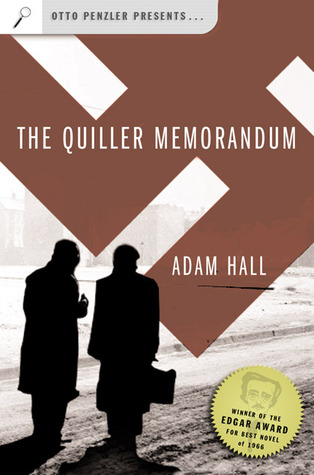 Twenty years after the fall of the Third Reich, West Berlin remains infested with ex-Nazis. Quiller, an undercover Nazi hunter for British intelligence, reluctantly accepts an assignment to uncover a Nazi organization called Phoenix and learn their plans for starting a non-nuclear World War III that would bring the Reich back to power. Two fellow agents have already died trying to accomplish this objective, and Quiller's superiors are quite certain he will be the third.
Twenty years after the fall of the Third Reich, West Berlin remains infested with ex-Nazis. Quiller, an undercover Nazi hunter for British intelligence, reluctantly accepts an assignment to uncover a Nazi organization called Phoenix and learn their plans for starting a non-nuclear World War III that would bring the Reich back to power. Two fellow agents have already died trying to accomplish this objective, and Quiller's superiors are quite certain he will be the third.This is the plot to the 1965 espionage novel, The Quiller Memorandum (originally published as The Berlin Memorandum). In it, author Elleston Trevor writing as Adam Hall creates a spy hero unlike any others, devoid of the swashbuckle of a James Bond or the bureaucratese of a George Smiley. Having served as a spy behind enemy lines during the war, Quiller is now middle-aged and has grown tired of his job, but realizes it is the only thing that makes him feel alive. He also has a personal reason for accepting what appears to be suicide mission: one of the Phoenix crowd is said to be a long missing Nazi whom Quiller had personally witnessed execute dozens of Jews.
The Quiller Memorandum is more a psychological thriller than an action thriller. The first person narrative spends more time discussing the psychology of espionage -- such as how to out think a pursuer, or the mental attributes needed to withstand interrogation and torture -- than it does describing shoot outs or fist fights. An entire section of the book describes the mental acrobatics needed to break a cipher code.
That may not sound exciting if you enjoy your spy novels full of bomb blasts and car chases, but Quiller is an intensely gripping read if you like more realistic espionage stories. And if you like historical settings, Quiller has it -- though at the time of its writing, the settings were all contemporary.
November 9, 2013
Expect the Unexpected In "Savage Payback"
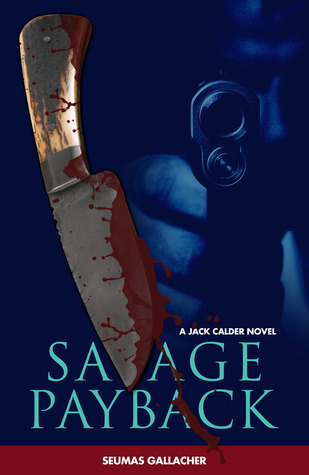 Savage Payback, Seumas Gallacher's third entry in his Jack Calder series, sees the former SAS officer thrown up against the international drug trade and a renegade former special ops operator with a thirst for revenge against Calder's specialist security firm, International Security Partners.
Savage Payback, Seumas Gallacher's third entry in his Jack Calder series, sees the former SAS officer thrown up against the international drug trade and a renegade former special ops operator with a thirst for revenge against Calder's specialist security firm, International Security Partners.Coordinated attacks are made against some of London's most elite jewelry merchants— many of them ISP clients. The subsequent murders of ISP employees in Europe and Asia soon makes it clear both the jewelry heists and murders are part of a planned program of revenge aimed at ISP for its earlier interference in a major drug operation. But when the revenge attacks hit too close to home, the victims become the avengers. From the U.S./Mexico border frontier to Turkey to Bosnia, Calder and his team of extreme measures experts burn a path of savage revenge through the drug cartels and their mercenary henchmen.
Savage Payback is an explosive ride through the shadowy world of the international drug trade. A word of advice—expect the unexpected.
November 3, 2013
Heinlein's "Harsh Mistress" Masterful
 In the year 2075, the moon has become a penal colony for a
In the year 2075, the moon has become a penal colony for a
federated earth. The denizens of the moon, called Loonies, are required to grow
crops for shipment to an overcrowded and hungry earth. Tired of lives of servitude
to an earth to which they hold no allegiance, a small group of Loonies and a sentient
computer called Mike, plot to liberate the moon. So is the plot to Robert
Heinlein’s novel, The Moon Is a Harsh
Mistress, considered by many to be his most ambitious work.
Social revolt and liberation are common themes for Heinlein’s
book. A libertarian, Heinlein believed the best government is no government. In
Mistress, his Loonies have established
a live-and-let-live existence in which common survival and common sense are the
only laws. The also uses Mistress to explore new form of family and sexual relationships
between men and women, another recurring theme in his books.
Heinlein’s plotting and character development – especially that
of the computer Mike – are masterful. So, too, is his detailed analysis of the revolution,
from the secret cells which stimulated the revolt through quiet propaganda to
the carrot-and-the-stick diplomacy that eventually wins Luna’s freedom.
The theme of the book, however, seems trite from this viewpoint
in history. Written in 1966, Heinlein hadn’t seen the real results of a lawless
country that today we see in such places as Somalia. The author seems to harbor
a belief that the American Old West was a land without law or regulations; in
fact, the American West was extremely regulated. There were more and stricter gun
control laws in the Old West, for instance, than there are in the U.S. today.
Nevertheless, Heinlein seems to recognize the futility of
his theme by the end of Mistress. The
narrator, Manuel Garcia “Mannie” O’Kelly-Davis, finds himself disappointed in
the results of the revolution and begins thinking of immigrating to the
asteroid fields – by then the Wild West of the late 21st century,
without government and without laws.
Heinlein was, and remains, a master of science fiction.
October 16, 2013
DeMille's "Up Country" a Walk Through Youthful Memories of War
 War never leaves you. Once exposed to it, it lives on in the dark recesses of your memory, surfacing every now and then in the form of nightmares or, sometimes, nostalgia. In Up Country, author Nelson DeMille brings back Paul Brenner, the smart-mouth Army criminal investigator from his earlier novel, The General’s Daughter, and together they take the reader on a trek through some of the bloodiest battlefields of the Vietnam War. For both Brenner and DeMille, it is a walk through the memories of their youth.
War never leaves you. Once exposed to it, it lives on in the dark recesses of your memory, surfacing every now and then in the form of nightmares or, sometimes, nostalgia. In Up Country, author Nelson DeMille brings back Paul Brenner, the smart-mouth Army criminal investigator from his earlier novel, The General’s Daughter, and together they take the reader on a trek through some of the bloodiest battlefields of the Vietnam War. For both Brenner and DeMille, it is a walk through the memories of their youth.
Brenner, now retired from the Army, is recalled to service by his former Criminal Investigative Division boss and sent on an “unofficial” mission to Vietnam. A letter taken from a dead North Vietnamese soldier 30 years before and only recently translated describes the murder of an American Army lieutenant by his senior officer, a murder the letter writer witnessed while hiding from the Americans during the Tet Offensive. Brenner’s job is to return to Vietnam as a tourist and try to determine if the witness is still alive. It soon becomes apparent to Brenner that if the witness is still alive, someone wants him dead.
DeMille, like his character Brenner, was an infantryman in Vietnam. Like Brenner, DeMille saw heavy combat during the 1968 Tet Offensive. It was, in fact, DeMille’s return to Vietnam with a group of veterans thirty years after the war that inspired Up Country. As Brenner makes his way from Ho Chi Minh City (formerly Saigon) up to the north country around Quang Tri and Hue, he visits several battlefields where both men fought—Brenner in fiction, DeMille in real life. The firefights Brenner describes in the book are the actual firefights DeMille took part in.
While Brenner was an Army warrant officer, DeMille was a commissioned officer, a responsibility which, like his hero, he obviously took very seriously. As with its predecessor, one of Up Country’s themes can be summed up in Gen. Douglas MacArthur words: Duty, Honor, Country. Both of DeMille’s Paul Brenner books, I believe, can stand up to classics with similar themes, such as Anton Myrer’s Once an Eagle, and Herman Wouk’s The Caine Mutiny.
October 13, 2013
It's Here Now! "Empty Places" Now Available
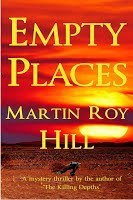 I’m am very
I’m am verypleased to announce my latest mystery thriller, Empty Places, is now available in both print and Kindle ebook from
Amazon.com.
Empty Places takes the reader back to the mid-1980s as the
United States clawed its way out of the worst economic collapse since the Great
Depression, scandal after scandal plagued the national political scene, and the
White House waged two illegal and unpopular wars in Central America.
News service
reporter Peter Brandt returns from covering those wars to the wealthy
California desert playground of Palm Springs to bury his ex-wife, TV journalist
Robin Anderson, with whom he is still in love. When Peter learns Robin was
brutally murdered and the local police are doing nothing to uncover her killer,
he sets out with his friend, retired cop Matt Banyon, to discover her killer.
Peter and Matt’s
investigation uncovers a cabal of corrupt politicians, anti-communist
Nicaraguan Contra supporters, and drug smugglers. Before it’s over, Peter will
face his own death in a dark and empty place.
Every novelist is
said to draw on his or her personal experiences to create their work. For me, Empty Places is the book that drew most
on my own life. Like my character Peter Brandt, I worked as a police reporter
for a daily newspaper in Palm Springs in the late 1970s and early 1980. Later,
as an investigative reporter for San
Diego Magazine, I reported on the Americans involved in providing supplies
to the Nicaraguan counter-revolutionaries, or Contras, in the 1980s.
Empty Places is available in both print and Kindle ebook
formats from Amazon. The print edition
will soon be available from Barnes & Noble.



